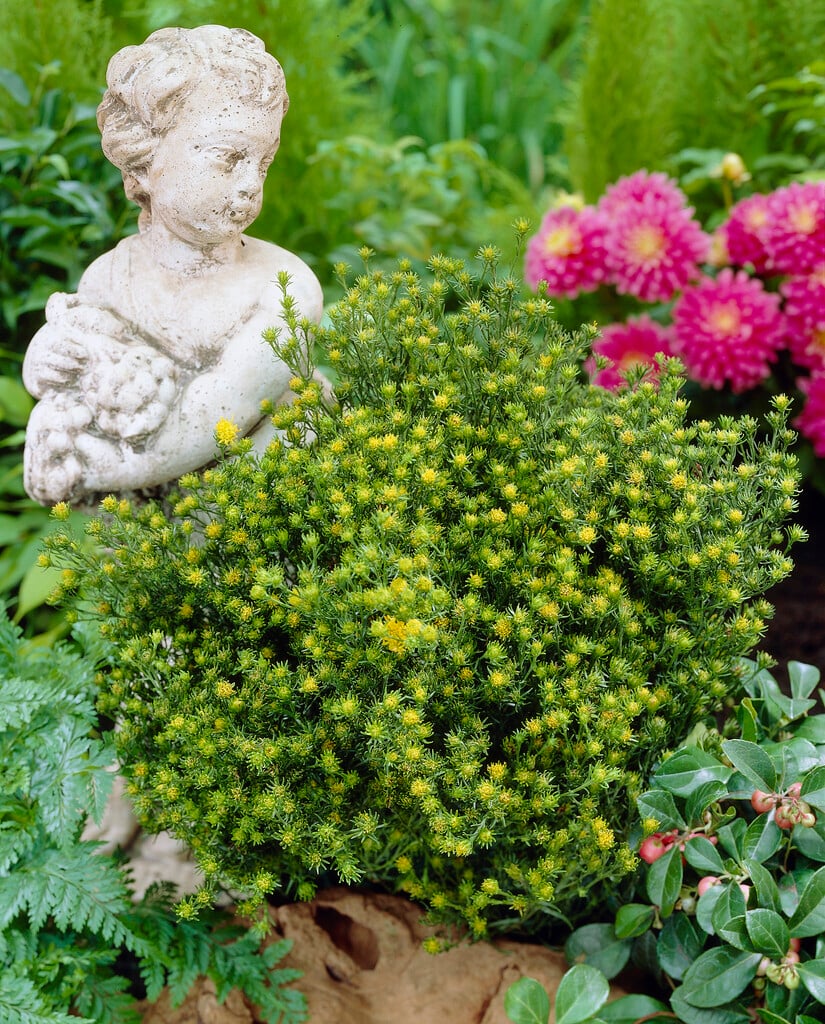Galatella linosyris
goldilocks
A clump-forming perennial with erect, unbranched stems to 70cm tall, heavily clothed with upward-pointing, linear leaves. In late summer and autumn it produces clusters of yellow flowers at the stem tips. A rarely occurring British native wildflower
Other common names
goldilocks astergoldylocks
Synonyms
Galatella linosyris 'Goldilocks'Aster linosyris 'Goldilocks'
see moreChrysocoma linosyris
Linosyris vulgaris
Aster linosyris

Buy this plant
Size
Ultimate height
0.5–1 metresTime to ultimate height
2–5 yearsUltimate spread
0.1–0.5 metresGrowing conditions
Moisture
Moist but well–drainedpH
Acid, Alkaline, NeutralColour & scent
| Stem | Flower | Foliage | Fruit | |
| Spring | Green | |||
|---|---|---|---|---|
| Summer | Yellow | Green | ||
| Autumn | Yellow | Green | ||
| Winter |
Position
- Full sun
- Partial shade
Aspect
East–facing or South–facing or West–facing
Exposure
Sheltered Hardiness
H6Botanical details
- Family
- Asteraceae
- Native to GB / Ireland
- Yes
- Foliage
- Deciduous
- Habit
- Columnar upright
- Genus
Galatella is a genus of around 30 species of tall, clump-forming herbaceous perennials found in Europe and Asia. They have narrow, hairy leaves and produce daisy-like flowers during the summer.
- Name status
Correct
- Plant range
- S & SE Europe
How to grow
Cultivation
Grow in well-cultivated, fertile, moist but well-drained soil in sun or partial shade. Mulch annually after cutting back in late autumn; stake in spring
Propagation
Propagate by seed or division
Suggested planting locations and garden types
- Coastal
- Cottage and informal garden
- Wildflower meadow
- Wildlife gardens
Pruning
Cut back to ground level in autumn
Pests
Diseases
Generally disease-free
Get involved
The Royal Horticultural Society is the UK’s leading gardening charity. We aim to enrich everyone’s life through plants, and make the UK a greener and more beautiful place.